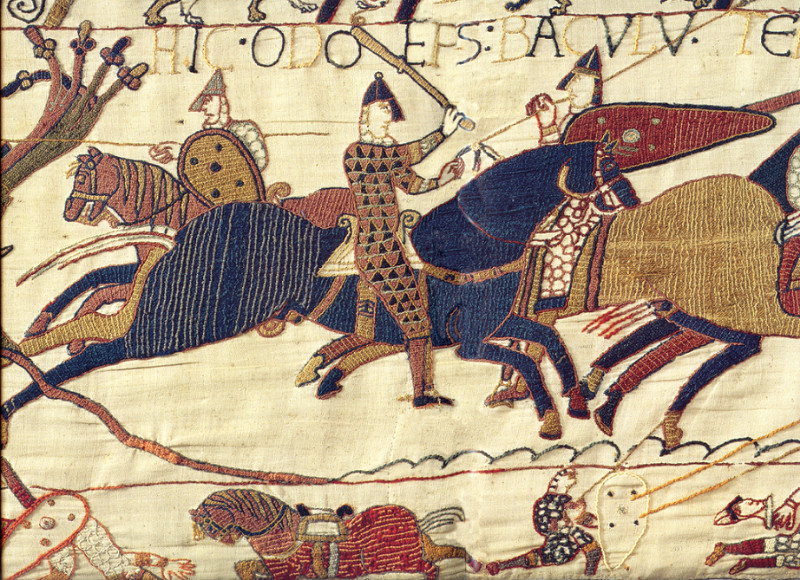This content is Read more [...]
Musee de la Tapisserie de Bayeux
Museum Category: Muzey
-
This content is only available in English.
Please suggest a new version in your language.
The Bayeux Tapestry (French: Tapisserie de Bayeux, IPA: [tapisi d baja¸], Norman: La telle du conquest) is an embroidered cloth nearly 70 metres (230 ft) long and 50 centimetres (20 in) tall, which depicts the events leading up to the Norman conquest of England concerning William, Duke of Normandy, and Harold, Earl of Wessex, later King of England, and culminating in the Battle of Hastings.According to Sylvette Lemagnen, conservator of the tapestry,
The Bayeux tapestry is one of the supreme achievements of the Norman Romanesque … Its survival almost intact over nine centuries is little short of miraculous … Its exceptional length, the harmony and freshness of its colors, its exquisite workmanship, and the genius of its guiding spirit combine to make it endlessly fascinating.
The tapestry consists of some fifty scenes with Latin tituli, embroidered on linen with coloured woollen yarns. It is likely that it was commissioned by Bishop Odo, William’s half-brother, and made in Englandnot Bayeuxin the 1070s. In 1729 the hanging was rediscovered by scholars at a time when it was being displayed annually in Bayeux Cathedral. The tapestry is now exhibited at the Musee de la Tapisserie de Bayeux in Bayeux, Normandy, France (49.2744°N 0.7003°W).
The designs on the Bayeux Tapestry are embroidered rather than woven, so that it is not technically a tapestry. Nevertheless, it is always referred to as such.
Eto soobshcheniye takzhe dostupna v: Английский Итальянский Французский Испанский Немецкий Португальский, Португалия
-
-




0 Comments on “Musee de la Tapisserie de Bayeux”